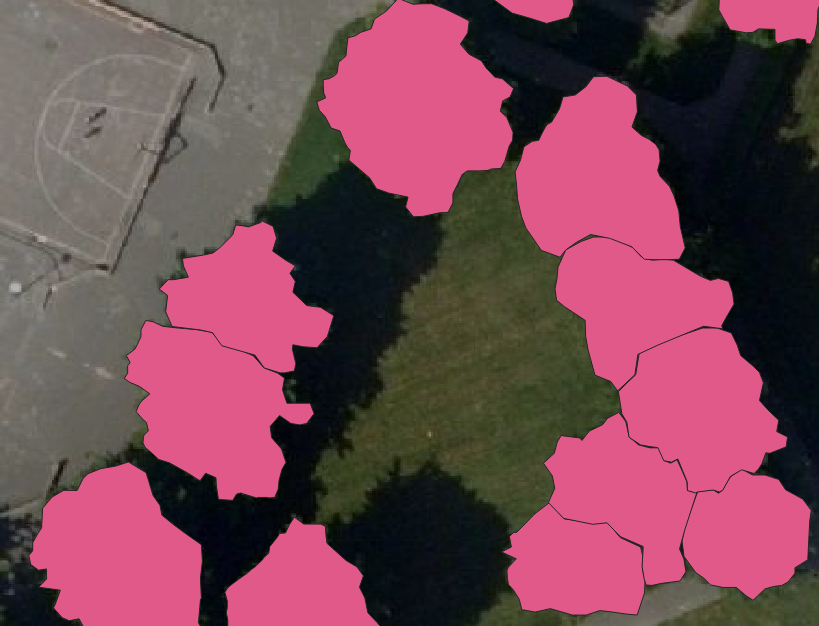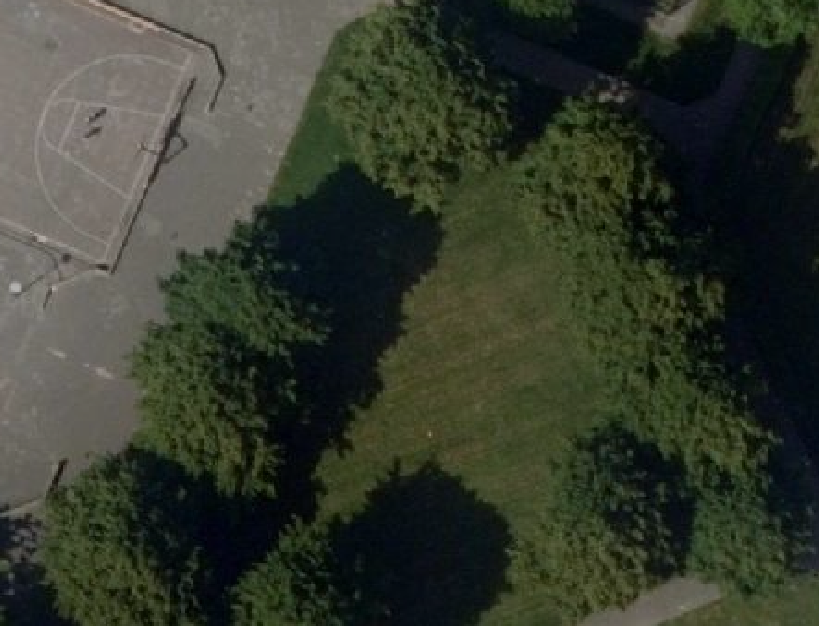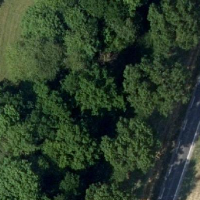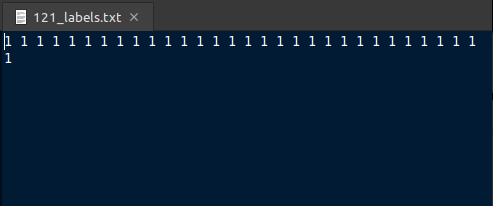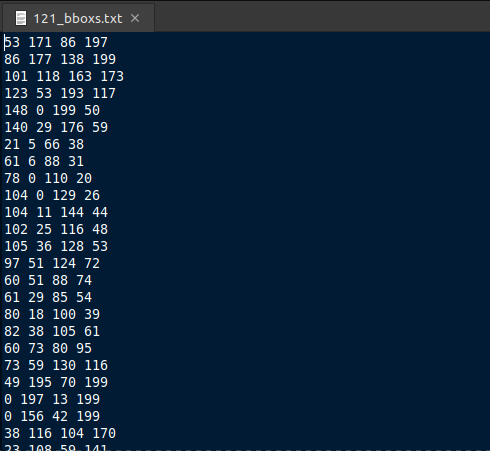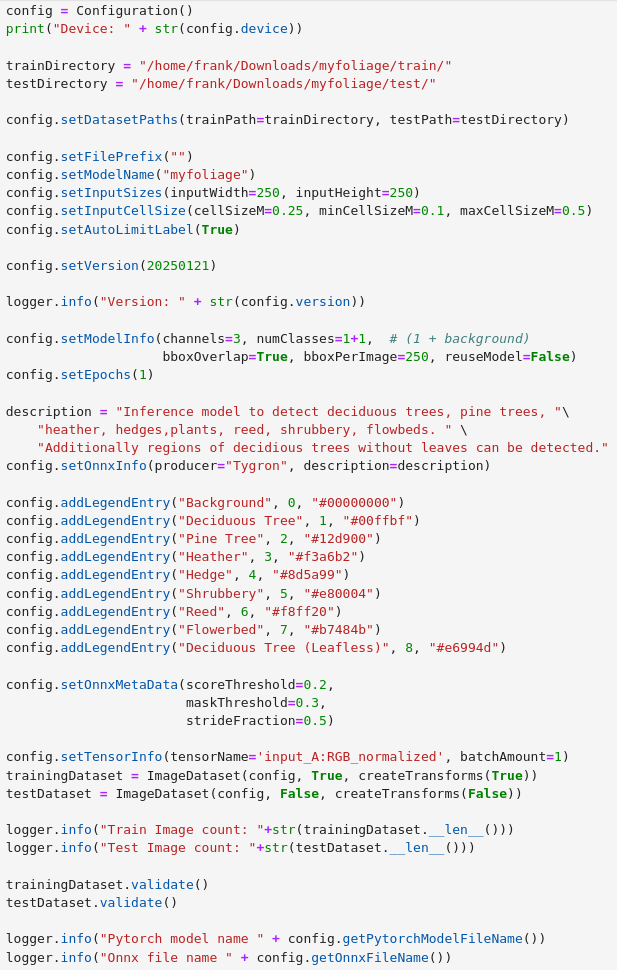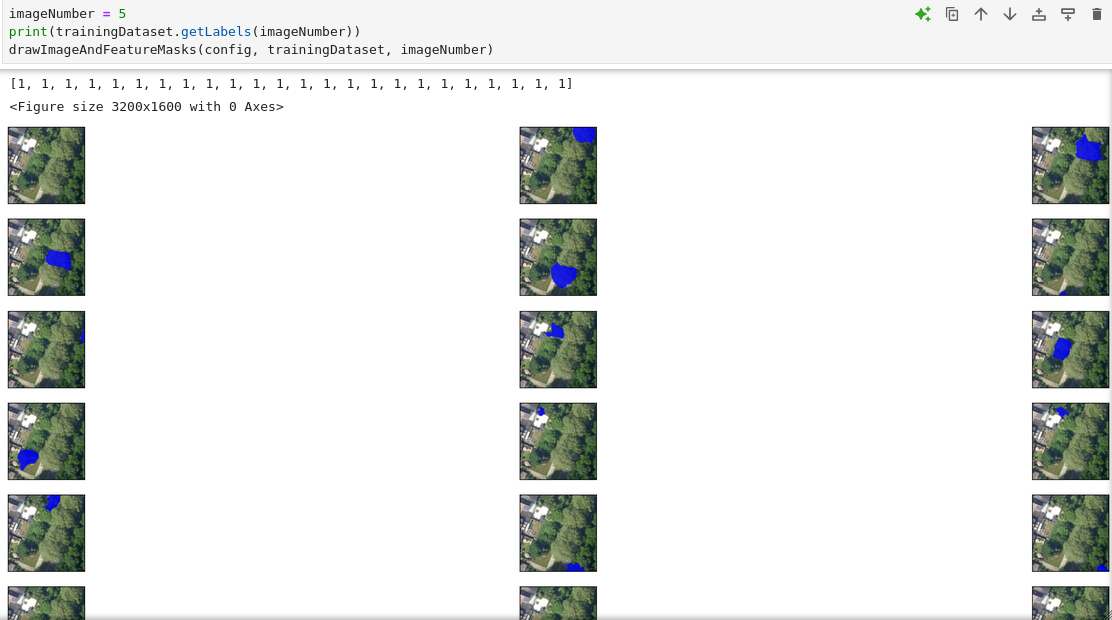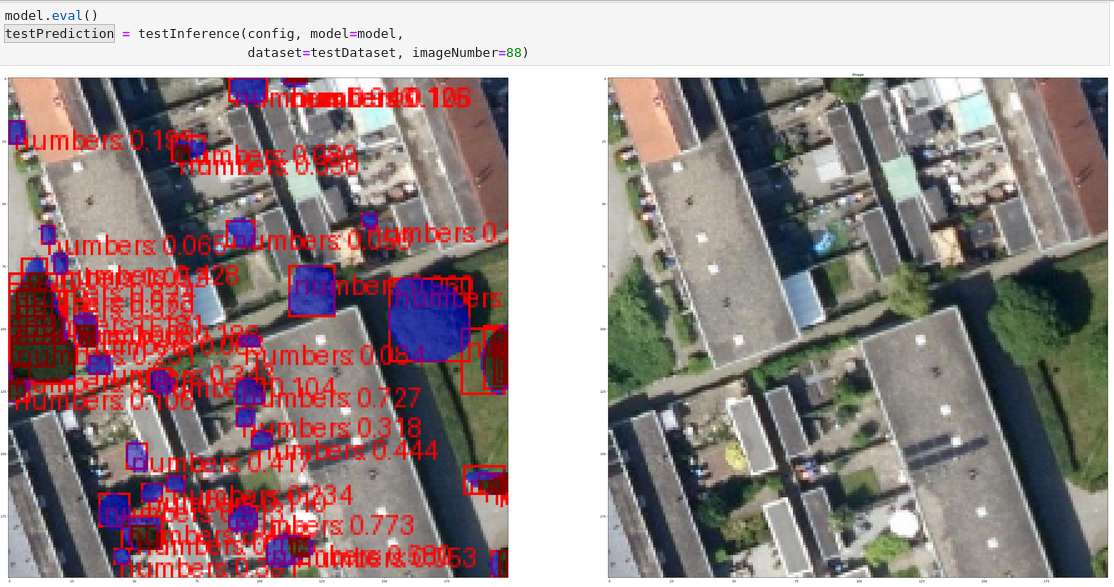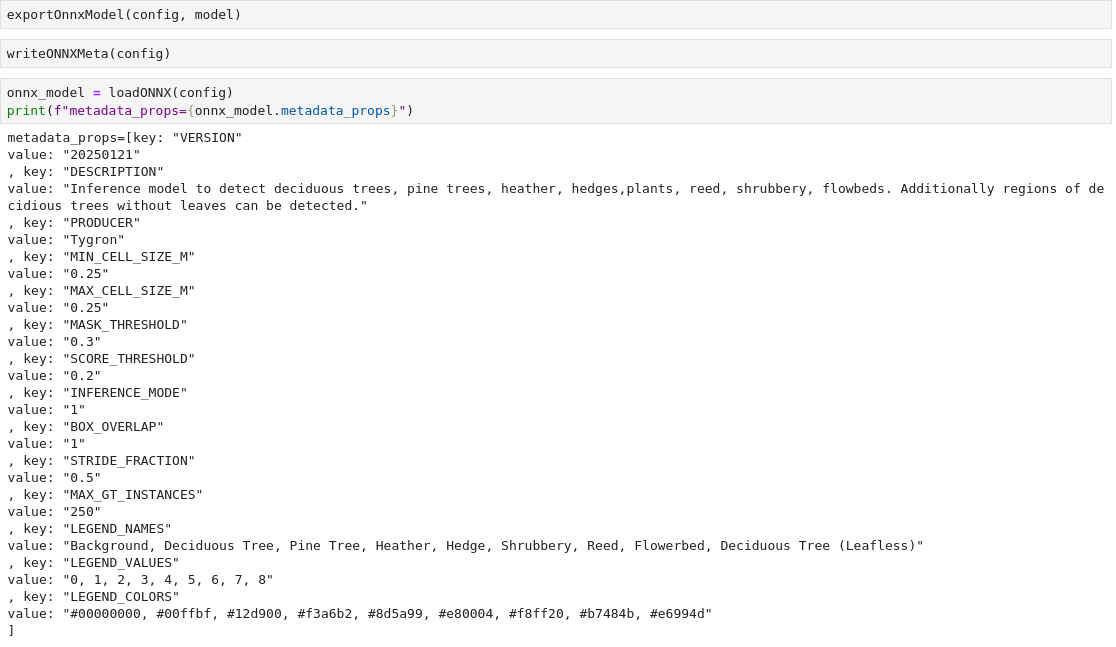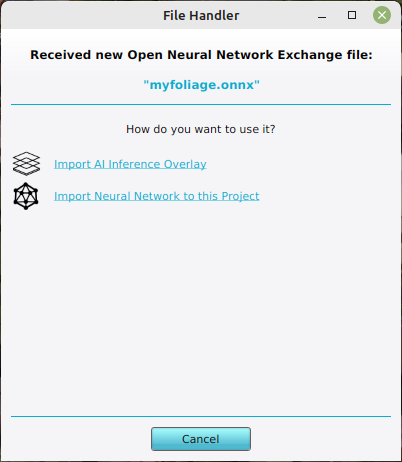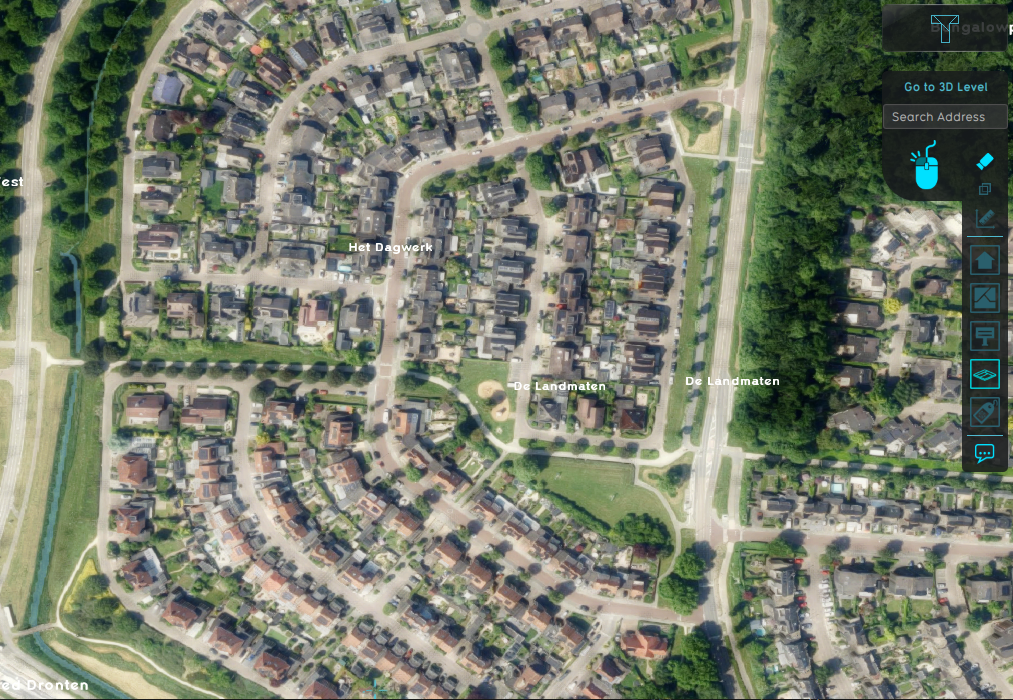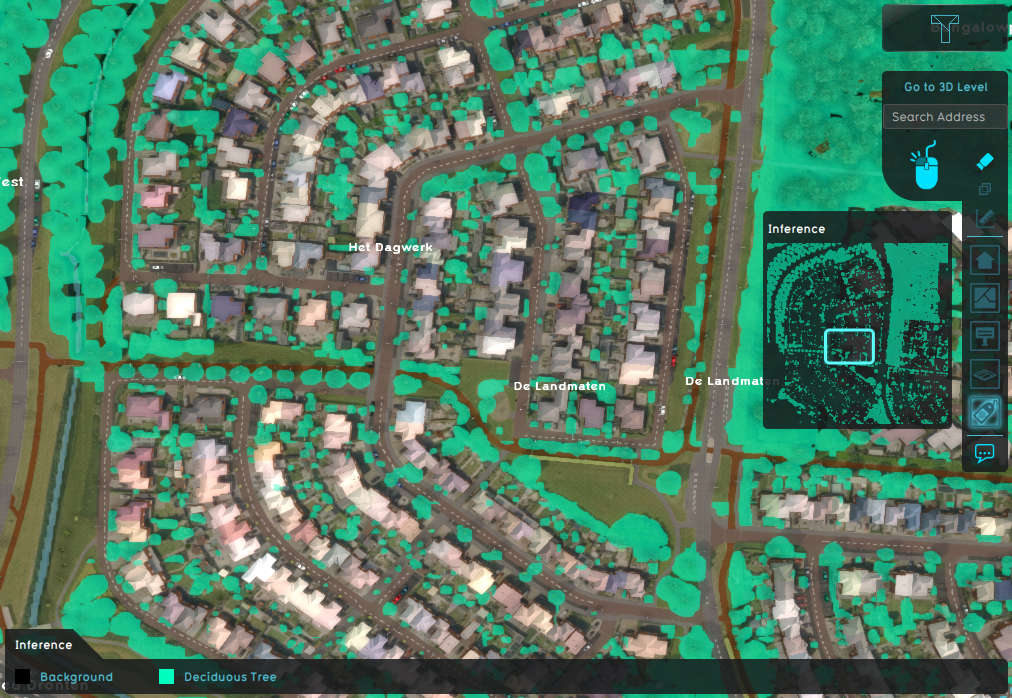Demo Training Data Project: Difference between revisions
m Frank@tygron.nl moved page Demo Train Dataset Project to Demo Training Data Project |
|
(No difference)
| |
Revision as of 14:41, 31 January 2025
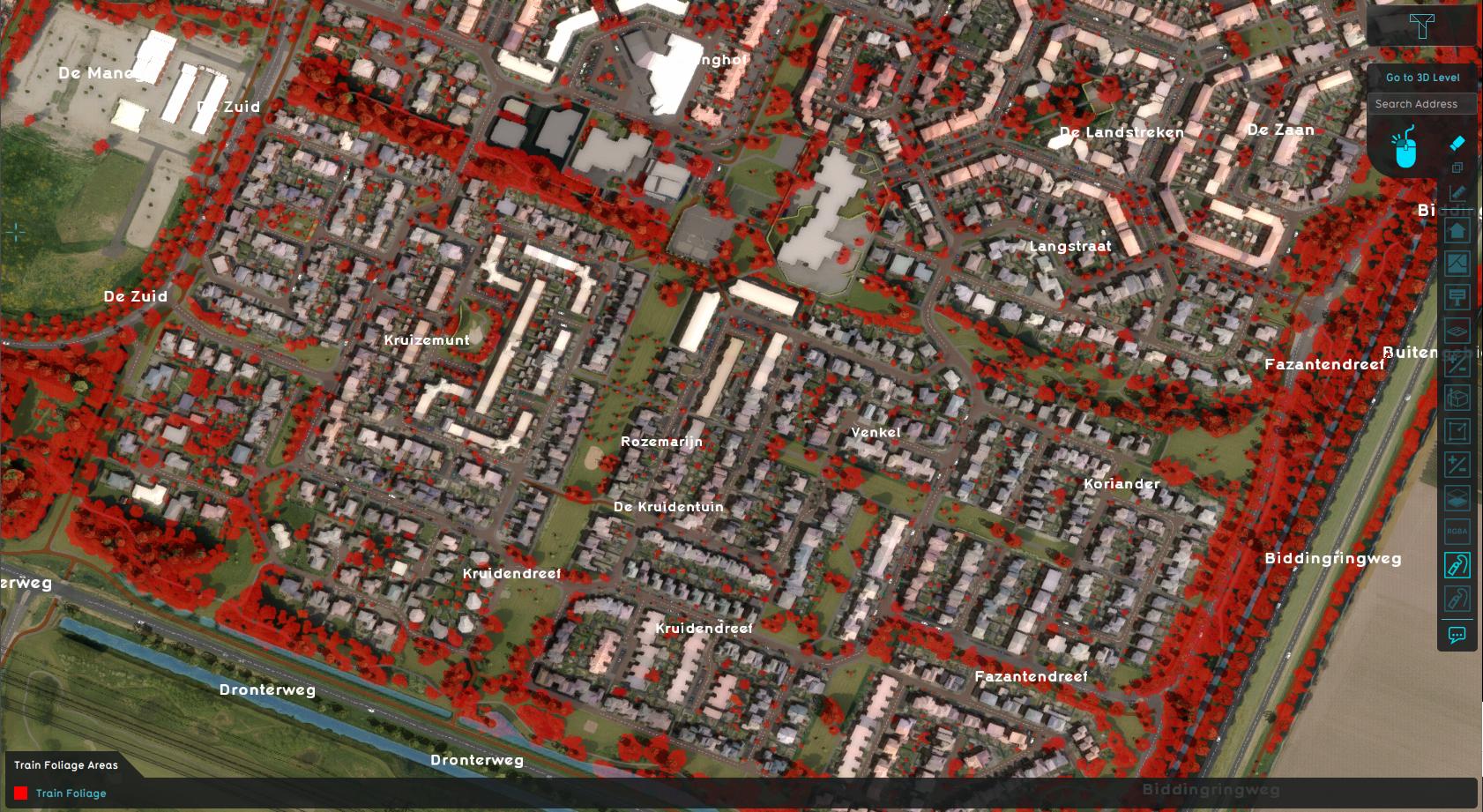
The Demo Train Dataset project is available for all users and can be found in the main menu under Edit projects. This project does not count towards your license.
This project is intended for people who are working in fields such as AI, remote sensing, data analysis, and urban planning.
This project showcases a method in the Tygron Platform to export a dataset for training a Mask R-CNN model..
The demo is a working project in which a number of areas are drawn, using a satellite overlay as underlay. These areas are marked with specific attributes, making it easy to export them as a training or test set using an export option in the Tygron Platform.
Project's content
Demo Train Dataset is a project that contains shapes of foliage, drawn as areas on top of a Satellite Overlay. These areas, in combination with satellite images, can be exported as a dataset for training a Mask R-CNN model. Such a model can then be applied to a different project location to detect foliage. A specific use-case is detecting foliage on private property, such as gardens and private yards.
-
Individual foliage areas
-
Satellite Overlay serving as input for images
AI Training Data
In order to train a Mask R-CNN model, we need to obtain two datasets, one for training and one for testing. A dataset consists of a list of numbered files, with the number representing the data entry number. Each data entry consists of the following files:
- An input image, as a PNG
- A mask image, as a PNG, containing gray values, where each gray value represents a unique identifiable feature.
- A label text file containing the classes of the identifiable features, where each class is identified with an integer number (larger than 0).
- Optional: A text file containing the bounding-box pixel numbers; min x, min y, max x, max y, for each identifiable feature in the input image.
-
Input image, in this case an image exported using the Satellite Overlay
-
Mask image with each unique feature identified by a gray value.
-
Class labels
-
Bounding box coordinates
The Tygron Platform allows users to export datasets. The Demo Train Dataset Project is set up to contain two separate sets of Areas to export; One set of Areas with the attribute TRAIN_FOLIAGE and one with the attribute TEST_FOLIAGE. Each set can be exported with an Overlay. Since both sets are drawn based on a Satellite Overlay named Original Satellite, we will use that Overlay.
Export a dataset
This how-to explains how to generate an AI Training Data using the Tygron Platform. This data can be used to train your own AI model.
- Select current situation in the ribbon bar
- Hover over Areas, and select Export Geo Data
- Under Format, select the option AI Training Data
- Select the filter option, and select the following attribute TRAIN_FOLIAGE
- For the Overlay option, select the Satellite Overlay named Original Satellite.
- Set the image size to 200 by 200. This ensures that the amount of areas per exported image does not exceed the maximum of 250.
- The stride can be kept at 50%
- Click on the Export Files button
- Select a suitable folder for the generated dataset.
- Wait until the dataset is fully generated.
Train your own model
A Tygron AI Suite[1] is available at github. This repository contains the necessary files to configure a Conda environment to train a new Mask R-CNN AI model.
Conda-forge's Miniforge[2] will be used to manage a Conda environments and run Jupyter Notebooks with python.
Example notebooks[3] provided in the repository can be used as a basis to train your own model.
TygronAI yml-file[4] provided in the repository can be used initialize a Conda Environment. It includes Pytorch and Jupyter Notebook.
- If you are not familiar with github, you can download the zip containing all the files that you need. Otherwise, clone the git repository
- Optionally unzip and open the folder containing the downloaded files; the local repository. Copy the path to this directory.
- Download[2] and install Miniforge.
- Open the Miniforge Prompt application.
- Change the directory to the path of the local repository. For example
cd user/git/tygronai/
This directory should contain the tygronai.yml file. - Create and initialize a new conda envirmonment with the tygronai.yml file using:
conda env create -n tygronai -f tygronai.yml
and press enter to confirm. - Wait for the downloads and unpacking to complete.
- Activate the create tygronai environment using:
conda activate tygronai
The name (tygronai) should now have appeared in place of (base) in front of the prompt. - Start the Jupyter Notebook application by typing:
jupyter notebook
- A browser will open with the Jupyter Notebook application.
- The application should open in the tygron ai repository folder. If not, browse to the folder of the tygron-ai-suite repository.
- Once in the correct folder, select the "example_config.ipynb".
- Adjust the following parameters:
trainDirectory = "PATH TO TRAIN FILES"
testDirectory = "PATH TO TEST FILES"
to the folders containing the exported datasets. See how to export AI datasets for more information. - Press the double arrow button named Restart kernel and execute all cells to run the Jupyter Notebook. See the images below of what to expect.
- Eventually an ONNX file will be created.
Training Considerations
There are some things to consider:
- To train a better model, increase the number of trained epochs, for example to 10:
config.setEpochs(10)
Please note that training with too many epochs may not improve the model; it will become too strict. - If any dataset contains more label classes than you would like to recognize, you can adjust the autoLimitLabel configuration to:
config.setAutoLimitLabel(True)
Applying your own model
Once you have trained your own AI model and exported it to ONNX, you can import this model into your project and apply it using an Inference Overlay.
However, you will first need to create a new project on a different geographical location than this demo project is situated. Please follow the steps of the New Project Wizard.
Once you have created a new (non-empty) project opened in the editor, you can continue with the configuration of an Inference Overlay.
- To do so, drag the ONNX file onto the Tygron Client Application
- With the popup menu shown, select the option: Import as an Inference Overlay. This Inference Overlay should be configured almost automatically.
- Next, add a new Satellite Overlay.
- Next, select the Inference Overlay and for Input A, select the Satellite Overlay
-
ONNX file popup in the Tygron Client
-
Input Satellite Overlay
-
Inference Overlay using the imported ONNX file
Considerations
When exporting data and training your own AI model, there are a few considerations that require attention.
Application considerations
- The input prequel overlay should match the data it was trained on. For example, if it was trained on a satellite overlay, you should not use a WMS-Overlay of an Infra Red service as input.
- The grid cell size should match the precision it was trained on.
How-to's
- How to export AI Training Data
- How to train your own AI model for an Inference Overlay
- How to detect foliage using an Inference Overlay
See also
- ↑ Cite error: Invalid
<ref>tag; no text was provided for refs namedref-aisuite - ↑ 2.0 2.1 Cite error: Invalid
<ref>tag; no text was provided for refs namedref-Miniforge - ↑ Cite error: Invalid
<ref>tag; no text was provided for refs namedref-NotebookExample - ↑ Cite error: Invalid
<ref>tag; no text was provided for refs namedref-ymlfile
